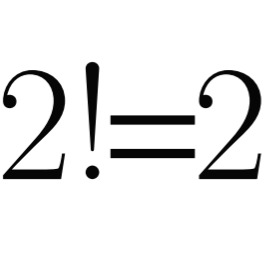집합론, 그 두 번째 이야기 | 선택공리 ( Axiom of Choice )
In the previous post, we saw an axiom named axiom of choice.
|
10. Axiom of Choice
|
Here, it is better to understand
To put it simply, if not all elements of
In a way, this seems to be a very obvious result. Of course, if S is a finite set, it would be clearly true. However, in the case of infinite sets, it is not a trivial result.
For an infinite set
|
1. Hausdorff Maximal Principle; HMP In any partially ordered set 2. Zorn's Lemma; ZL If a partially ordered set 3. Well Ordering Theorem Every non-empty set always has an well-ordering. |
The axiom of choice implies the Hausdorff maximal principle, the Hausdorff maximal principle implies the Zorn's lemma, and the Zorn's lemma implies the well ordering theorem. Finally, the well ordering theorem implies the axiom of choice. We will post the proof of them later.
'수학 > 집합론 | Set Theory' 카테고리의 다른 글
| 집합론, 그 여섯 번째 이야기 | 함수 (0) | 2020.05.08 |
|---|---|
| 집합론, 그 다섯 번째 이야기 | 관계 (0) | 2020.05.08 |
| 집합론, 그 네 번째 이야기 | 곱집합 ( Cartesian Product ) (0) | 2020.05.07 |
| 집합론, 그 세 번째 이야기 | 집합의 연산 ( Operations of Sets ) (0) | 2020.05.07 |
| 집합론, 그 첫 번째 이야기 | 선택공리를 추가한 체르멜로-프랑켈 집합론 ZFC ( Zermelo-Fraenkel Set Theory with Axiom of Choice; ZFC Set Theory ) (0) | 2020.05.07 |








